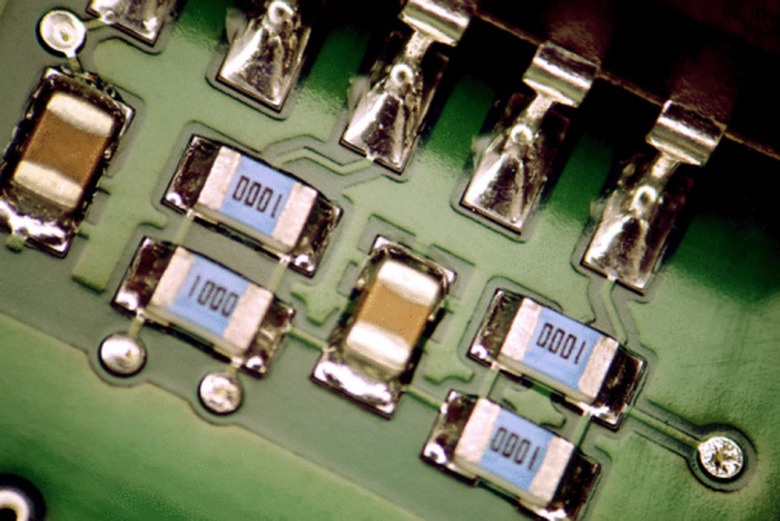Digital Electronics Mini Projects
Digital electronics mini projects are an affordable way for students, parents and teachers to practice electronic engineering without the need for an expensive, fully stoked engineering lab. Many young people want to learn more about digital electronics, make their own devices, work with computer hardware and study how the digital world works at the circuit level, but cannot practice in their classrooms or at home because of the cost. There are a number of mini projects that help young people practice the necessary skills in preparation for university work but that have lower difficulty levels and easily attainable parts.
Mobile Phone Sniffer
A mobile phone sniffer is an attention-grabbing project for the digitally minded generation. Most students now have mobile phones, so the ability for them to make a small device that sniffs out mobile phones excites them. Once completed, you can make a treasure hunt and clue game in which teams have to find phones at certain locations and follow the directions on the phones' text messages to find the final prize. The project requires nine resistors, four capacitors, two enameled copper wire inductors, four semi-conductors, a stereo socket, an on/off push button switch, 9-volt battery with clip-on leads, 8-way integrated circuit, or IC, socket, a small case to protect the parts and a small, two-prong, 3-inch antenna. The mobile phone sniffer is a good upper-beginner to intermediate-level project.
Electronic Dice
Games like Monopoly, Yathzee, Dungeons and Dragons, Craps and innumerable others use dice. An electronic dice mini project allows you to work with your students or children to make their own digital dice (where they push a button and see the result on an LED screen) and practice soldering and circuitry while creating a project they can use with their friends. The electronic dice project requires 13 resistors ranging from 4.7K (ohm) 1/4W (watt) to 150K 1/4W, two electrolytic capacitors, a 1N4148 signal diode, an LED attachment, 555 timer IC, 74LS192 4-bit counter IC, 74LS08 quad-integrated and gate IC, a push-button switch, small circuit board, switch, sockets for the ICs and a small case to contain all of the hardware. The electronic dice digital mini project is an intermediate project because of the complexity of the circuitry and soldering difficulty.
Improved Infrared Receiver
The remote control is a necessary item for most homes in the modern world; without a remote control, people can't relax in their easy chairs and change satellite channels, control DVDs, play video games and control their stereos. Control over your PC is possible as well with a serial port infrared receiver. Building an improved infrared receiver is a more advanced mini digital project, but it is still affordable and easy enough to do at home. The project requires a TSOP (Thin Small Outline Package), 1738 (38 KHz) or TSOP 1736 (36 KHZ) receiver, LED attachment, six resistors, two electrolytic capacitors, serial port connector, lithium ion battery to power the unit and small circuit board. Once finished, the actual use of the infrared receiver requires software; you can use WinLIRC, Miriam, IRAssistant or Girder plus the Igor plugin to make it work.
Cite This Article
MLA
Roe, Charles. "Digital Electronics Mini Projects" sciencing.com, https://www.sciencing.com/digital-electronics-mini-projects-8100949/. 24 April 2017.
APA
Roe, Charles. (2017, April 24). Digital Electronics Mini Projects. sciencing.com. Retrieved from https://www.sciencing.com/digital-electronics-mini-projects-8100949/
Chicago
Roe, Charles. Digital Electronics Mini Projects last modified March 24, 2022. https://www.sciencing.com/digital-electronics-mini-projects-8100949/
